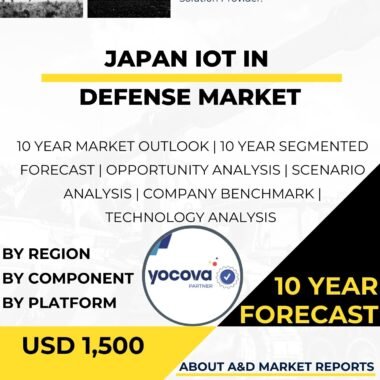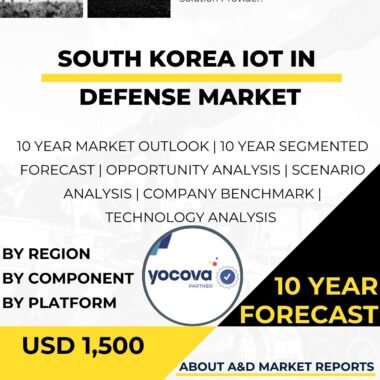Description
The Internet of Things (IoT) has revolutionized numerous industries, and the defense sector is no exception. The United States military has embraced IoT technologies to enhance its capabilities, streamline operations, and improve situational awareness on the battlefield. IoT in defense refers to the network of interconnected devices, sensors, and systems that enable the collection, transmission, and analysis of data to support military operations effectively.
One of the primary applications of IoT in defense is in the area of asset management and logistics. Military organizations have vast inventories of equipment, vehicles, and supplies that need to be tracked, maintained, and deployed efficiently. IoT sensors and tags are integrated into these assets, allowing real-time monitoring of their location, condition, and usage. This data enables logistics personnel to optimize supply chains, reduce downtime, and ensure that equipment is available when needed.
For example, in the U.S. Air Force, IoT sensors are used to monitor the health and performance of aircraft engines. By collecting data on engine performance, fuel consumption, and maintenance needs, the Air Force can proactively address issues and optimize engine efficiency, reducing maintenance costs and improving overall fleet readiness.
IoT in defense also extends to the battlefield itself, where sensors and devices provide critical information to commanders and troops. Remote surveillance and reconnaissance systems equipped with IoT sensors offer real-time situational awareness, enhancing battlefield intelligence and decision-making. Drones and unmanned aerial vehicles (UAVs) fitted with IoT technologies enable remote monitoring and data gathering, allowing military personnel to assess enemy positions and monitor potential threats.
Furthermore, wearable IoT devices are increasingly integrated into soldiers’ equipment to monitor their health and performance. These devices track vital signs, fatigue levels, and environmental factors, providing critical information to commanders and medical personnel. IoT-enabled wearables also enable more effective casualty evacuation and medical response in the event of injuries on the battlefield.
IoT is also transforming training and simulation in the U.S. military. Virtual and augmented reality technologies, combined with IoT sensors, create highly immersive training environments. Soldiers can engage in realistic scenarios that mimic actual battlefield conditions, improving their combat readiness and decision-making skills. IoT-enabled training also allows for data-driven analysis and performance evaluation, facilitating continuous improvement in military training programs.
The use of IoT in defense introduces new challenges related to data security and cyber threats. With an increasing number of connected devices and sensors, the attack surface for potential cyber adversaries expands. Securing IoT devices and networks becomes paramount to prevent unauthorized access, data breaches, and disruption of military operations.
To address these challenges, the U.S. military prioritizes cybersecurity measures and best practices. Secure communication protocols, encryption, and multi-factor authentication are employed to safeguard IoT networks and data. Additionally, continuous monitoring and threat analysis are conducted to detect and respond to potential cyber threats proactively.
Interoperability is another key consideration in the implementation of IoT in defense. The U.S. military operates across multiple branches and units, often in joint and coalition operations. Ensuring that IoT systems can seamlessly integrate and communicate with different platforms and networks is critical to achieving effective command and control capabilities.
Standardization and common data formats are vital in enabling the exchange of information between various IoT devices and systems. The U.S. Department of Defense (DoD) is actively working to establish standardized protocols and guidelines to ensure interoperability across the entire defense enterprise.
The adoption of IoT in defense is not without its challenges, but the benefits are significant. The data-driven insights and enhanced situational awareness provided by IoT technologies enable faster decision-making, improved operational efficiency, and greater mission success.
As the Internet of Things continues to advance, the U.S. military will undoubtedly leverage IoT technologies to remain at the forefront of defense innovation. The integration of IoT sensors, devices, and systems across various military applications will continue to shape the future of warfare, providing the U.S. military with a decisive technological advantage in the dynamic and ever-changing landscape of modern conflict.




